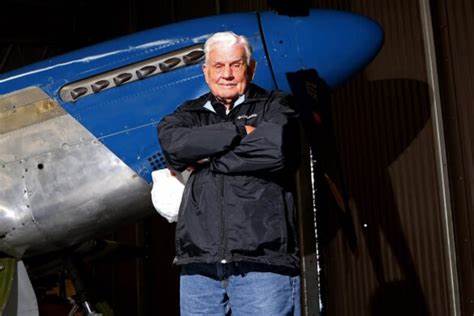
Brig. Gen. Clarence “Bud” Anderson, a celebrated World War II “triple ace” who later soared through a distinguished career as a test pilot, passed away in his sleep on May 17 at his home in Auburn, California.

At 102 years old, Anderson leaves behind a legacy of aerial valor and military innovation spanning over three decades. His life was a testimony to the heroic efforts of the Greatest Generation and the advancements in military aviation.
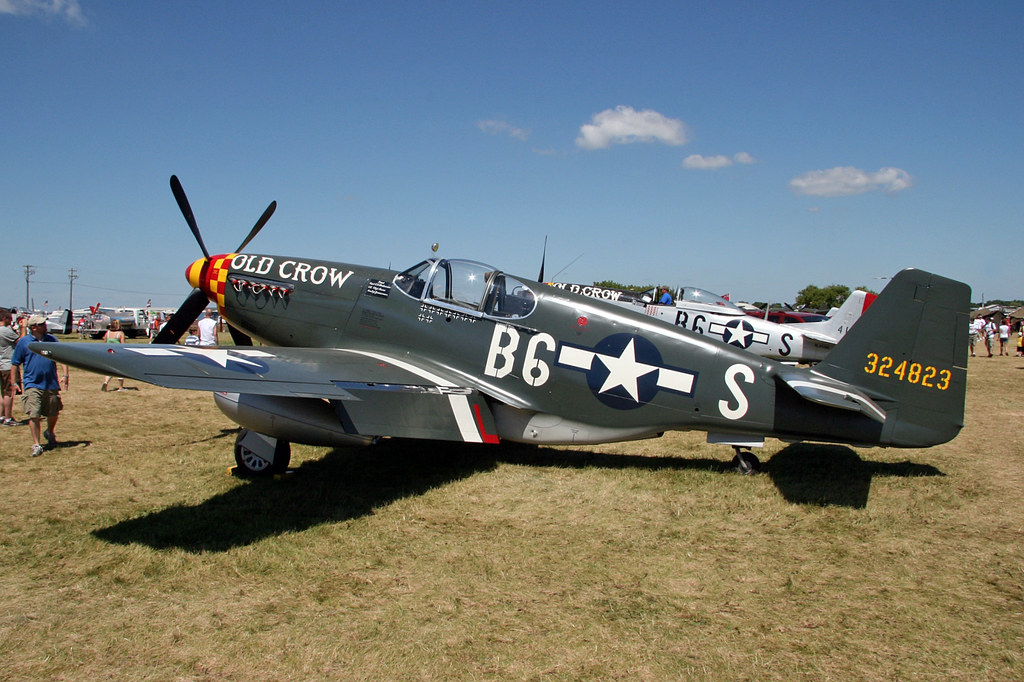
Born in Oakland, California, on January 13, 1922, Anderson joined the U.S. Army Air Forces shortly after the attack on Pearl Harbor.
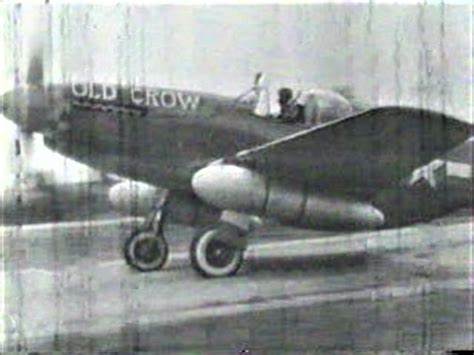
Earning his wings at Luke Field, Arizona, he joined the 357th Fighter Group, famously equipped with the North American P-51 Mustang— an aircraft that would come to symbolize Allied air supremacy.

The Mustang was credited with downing nearly 600 enemy planes during the war, and Anderson himself was responsible for 16.25 aerial victories, earning him the coveted title of “triple ace.”

It was on March 8, 1944, that Anderson claimed his first aerial victory. “On March 8 we were heading home, three or four guys, with [1st Lt. John England] along with us. We saw a Boeing B-17 below us, smoking, so we were headed over there when three Messerschmitt Me-109s came up. … They didn’t even see us,” Anderson recounted in an interview with Military Times. “We cut them off at the pass and I saw one and said, ‘This one’s mine.’”
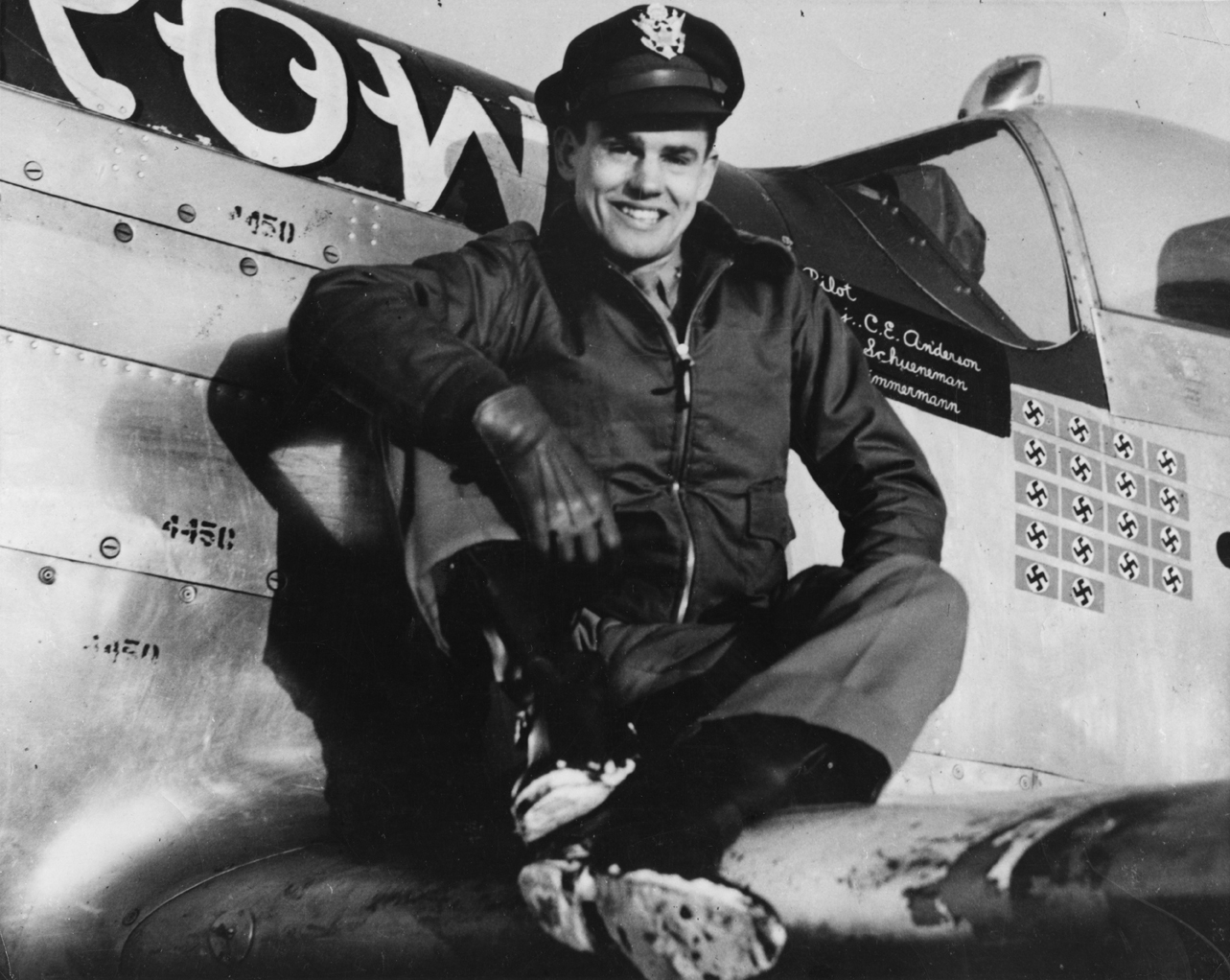
Anderson’s encounters in the skies over Europe were nothing short of legendary. He later recounted of his first mission over Berlin, “I don’t think it was sensational. The quality of the Germans went down by then. One Fw-190 dived under the clouds; I just slid down and blew it up.” His formidable flying skills and sharp eyesight made him a nightmare for the Luftwaffe.
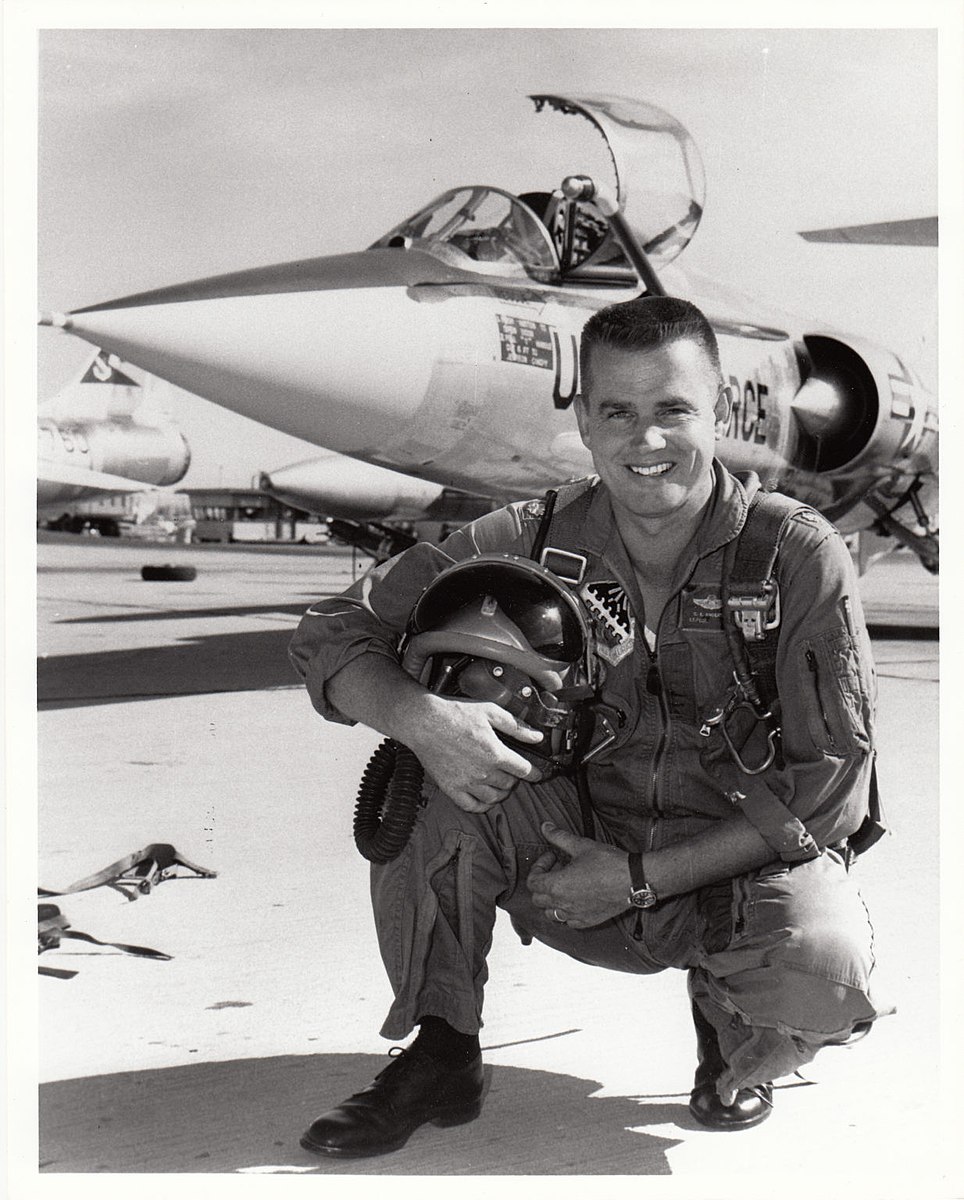
After World War II, Anderson helped transition the U.S. military into the jet age. He flew numerous early jet fighters and took part in pioneering test programs, including the experimental coupling of jet fighters to the wingtips of large bomber aircraft for range extension.

He served in various capacities, including as a squadron commander during the Korean War and as a wing commander flying missions over Vietnam.

Throughout his service, Anderson flew more than 130 different types of aircraft and logged over 7,500 flying hours.

His commendations included five Distinguished Flying Crosses, 16 Air Medals, two Legions of Merit, a Bronze Star, and a Commendation Medal.

In a culmination of his storied military career, the Air Force promoted him to the honorary rank of brigadier general in 2022.

Anderson’s post-retirement life was just as distinguished. He managed McDonnell Aircraft Company’s Flight Test Facility at Edwards Air Force Base, consulted on video games, authored aviation articles, and delivered lectures.

He was inducted into the National Aviation Hall of Fame in 2008, received the Congressional Gold Medal in 2015, and was honored with a life-size bronze statue at the Auburn Municipal Airport.
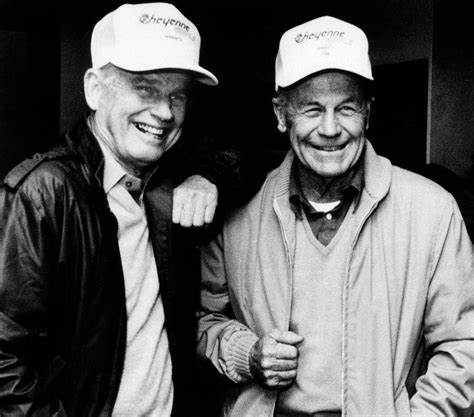
Throughout his remarkable life, Anderson shared a close friendship with fellow ace and test pilot Chuck Yeager, who famously described him as “the best fighter pilot I’ve ever seen.”
Relevant articles:
– Bud Anderson, America’s last World War II ‘triple ace,’ dies at 102, Air Force Times
– Clarence ‘Bud’ Anderson, Last World War II Triple Ace, Dies at 102, Military.com
– Bud Anderson, WWII Triple Ace and Air Force Test Pilot, Dies at 102, Air & Space Forces Magazine

